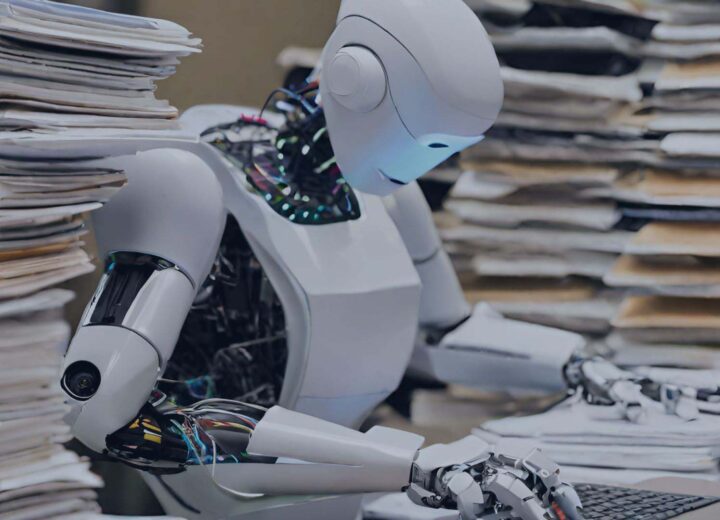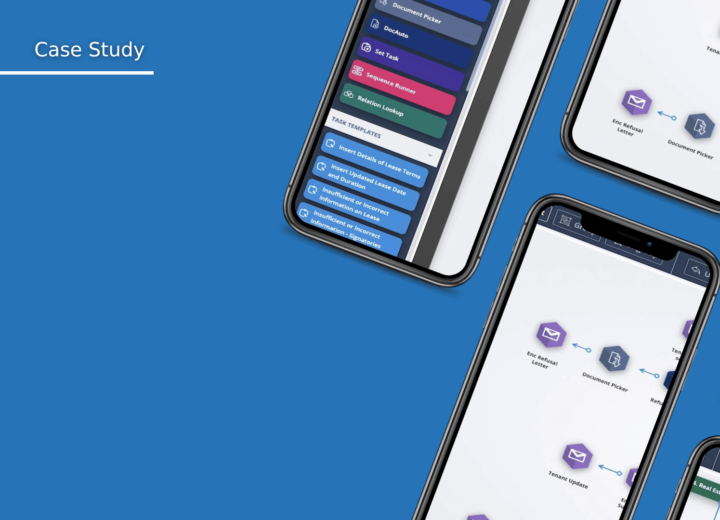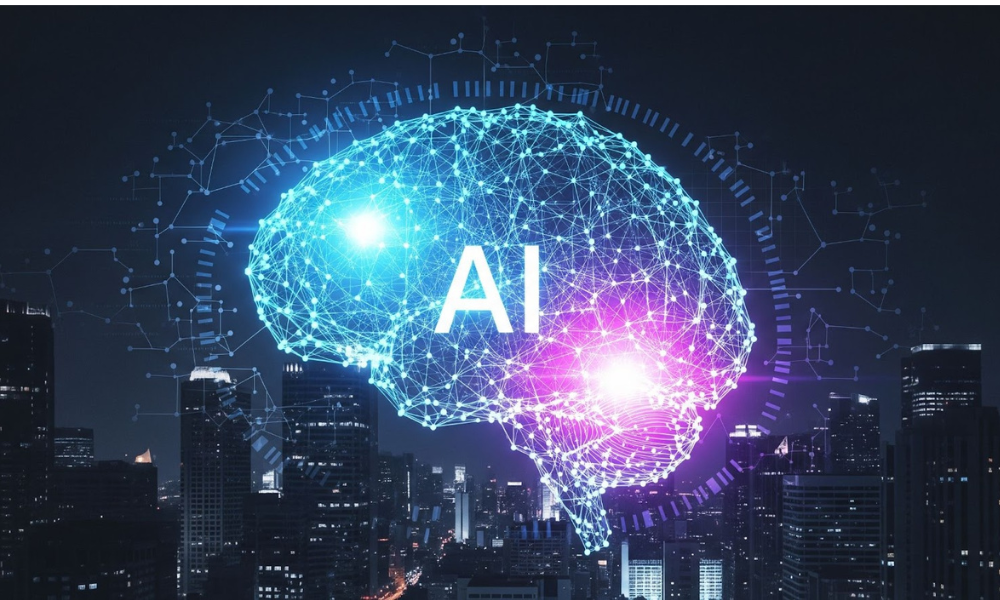Unlock the 3 Game-Changing AI Strategies of Tech Giants
Nowadays, artificial intelligence can be found everywhere in business, in articles, and on everyone’s lips. However, this interest raises the question: how can AI’s promises be turned into real, measurable results? We got the answer to this question from experts and enthusiasts on this topic from the BlueRider.Software team – Julia Dudowicz and Agnieszka Ruczaj, who recently returned from the Women in Tech Summit 2025 with some extremely interesting conclusions.
They talked about how tech giants – Salesforce, Hitachi and Pega – are replacing generalities with hard strategies and tools that are actually changing the game. Learn about the AI strategies of large tech companies.
Table of content
ToggleSalesforce: AI is a Complete Ecosystem, Not Just a Language Model
The Salesforce presentation has already provided a lot of valuable knowledge: skilful implementation of artificial intelligence is not just a large language model. The company takes an in-depth approach to the subject. Their Agent Force idea combines the collaboration of humans and AI agents; authentic digital change requires a coherent ecosystem: agents, applications and data.
This strategy is built on four pillars:
- A clearly defined business goal
- Auditing and understanding real processes
- Implementing flexible, reusable patterns
- Focusing on measurable business impact
Salesforce finds large-scale cyclical tasks (so-called ‘good use cases’) and then automates them in HR, sales or IT.

Pega: The No - Code Democratization of AI
On the other hand, Pega has shown a different approach based on the slogan ‘No code, no problem’. They want non-technical users to be able to use the power of AI. The GenAI-powered Blueprint tool, which allows you to generate entire process diagrams in seconds, is the best example of this.
This approach raises an interesting question about the differences in business benefits.
Feature Breakdown: Agentforce vs. Blueprint
Aspect
Salesforce Agentforce (AI Agents)
Pega GenAI Blueprint (No-code)
Goal/Model
This is an advanced “digital labor” platform based on AI agents that operate autonomously or in collaboration with people. It focuses on automating tasks in areas such as customer service, sales, and marketing.
This is a no-code/low-code tool that supports application and workflow design. Generative AI creates a ready-made process template, allowing the user to quickly design a solution without coding, based on best practices.
Key Features
It enables the creation of specialized agents, CRM integration, central oversight (Command Center), and ensures security through built-in AI guardrails.
It offers a workflow creator with industry templates, a menu of ready-to-use tasks for automation, process visualization, and UI generation by AI.
Business Benefits
It accelerates customer service and internal processes, increases employee productivity, and lowers service costs through extensive automation.
It guarantees faster application deployment (shorter time-to-market), reduces time-consuming analytical work, and allows for better use of industry knowledge and patterns.
Human Role
Decisions and oversight remain in the hands of users. AI assists and performs routine tasks, but experts define goals and improve processes.
AI generates an initial draft, but the final shape of the process is a result of collaboration between business and IT. The user accepts and modifies the generated solution.
Statistics
Since October 2024, the platform has increased customer retention by 22% and autonomously handles 70% of inquiries. It has been implemented in 8,000 companies in 6 months.
In less than 3 months since its premiere, users have built 35,000 free applications. Forrester described the tool as delivering “the first, optimal process draft, built on the basis of expert knowledge.
Salesforce vs. Pega – Where Do the Key Differences Lie?
We asked our expert, Julia Dudowicz, about this. This is how she explains it:
- Salesforce Agentforce: Uses AI agents to automate and perform tasks (the so-called ‘digital workforce’). The main benefit is increased productivity and reduced service costs.
- Pega GenAI Blueprint: Uses AI to design and generate application templates in a no-code model. The main benefit is a radical acceleration of the software development process.
In the simplest terms: Salesforce automates work, and Pega automates the creation of work tools. This shows that AI can support not only operations, but also the process of creating technology itself. And this is precisely the approach we implement for our customers – always with a specific business outcome in mind.

Hitachi: Prompt Engineering, the Art of Precise Communication with AI
Even a great AI tool is useless if we cannot write commands for it properly. Agnieszka Ruczaj, our AI enthusiast, emphasised that Hitachi places great emphasis on prompt engineering. So how do you write commands that artificial intelligence will understand the way the user wants?
The 6 Key Elements of an Effective Prompt
According to Hitachi experts, an effective prompt must contain six elements:
- Role
- Context
- Specificity
- Tone
- Format
- Examples
In addition, the Chain of Thought (CoT) technique, i.e. asking AI to explain its reasoning, dramatically increases the precision of the results.
The Most Common Mistake in Prompt Engineering and How to Avoid It
It sounds simple, but in practice it is easy to make a mistake. Agnieszka answered the question of what is the most common pitfall for beginners. This is what our enthusiast told us:
The most common and easiest mistake to avoid is imprecise or overly general instructions.
- Bad Example: Write a text about cats.
- Good Example: Write a short, funny blog post (approx. 200 words) for animal lovers, describing 3 funny facts about domestic cats. Use a lighthearted tone and end with a question for the reader.
The Common Denominator of Success: What Connects the Giants' Strategies?
Considering these examples, we can identify several common themes that define mature AI implementations:
- Idea before technology: First the goal, then the tools.
- Systemic thinking: Instead of separate applications, create comprehensive ecosystems.
- Focus on Practicality: Automating specific and scalable tasks
- Tools for people: Intuitive platforms for domain experts, not just engineers.
How to Measure the ROI of AI Implementation?
The biggest problem in creating key performance indicators (KPIs) for return on investment (ROI) in artificial intelligence is the intangible nature of its effects, which are difficult to measure unequivocally.
The main problems are:
- The problem of isolating the contribution of artificial intelligence: AI supports many departments simultaneously, making it difficult to assess its impact.
- The inadequacy of classic ROI: Classic financial metrics often do not take into account the full value that AI provides, such as increased productivity, better customer service, or greater employee satisfaction.
For this reason, experts suggest expanding the measures to include qualitative and indirect indicators, such as return on employee investment (ROIE), time to value, and end-user technology adoption metrics.
Conclusion: From Fascination to Practice
The conclusions from the Women in Tech Summit 2025 are clear: the era of fascination with AI has long given way to the era of its practical application. Artificial intelligence is becoming a standard, measurable, and powerful tool for solving real business problems. The question is no longer “if” but “how” to implement AI.
Practical AI Tips for Smaller Companies
But what about companies that aren’t tech giants? We asked Agnieszka Ruczaj for advice.
- Automate Repetitive Tasks: Use ready-made AI-as-a-Service tools (e.g., ChatGPT, Zapier with AI, Notion AI, Grammarly, Tidio) to automate customer service, content writing, or preparing offers. You can generate e-commerce product descriptions, create automated chat responses (chatbots), or draft emails.
- Foster a Culture of Learning and Experimentation: Organize internal AI hackathons, training sessions, or pilot implementations. Give people a chance to experiment. A good idea is to periodically test new AI tools (e.g., HeyGen, Runway, Claude) or create a shared company list of “AI tips” for daily work.
Need
AI Tool
Cost
Content creation
ChatGPT Plus, Notion AI
~$20/month
Customer service
Tidio, ChatGPT with context
~$30/month
Automations
Zapier with AI, Make.com
Free/low
Visualizations/reports
Excel + Copilot / GPT + Sheets
Low
Custom website chatbot
Chatbase, Botpress, Flowise
Free/low
Important Links
For all who wish to delve deeper, we’ve gathered the official sites and resources for the discussed technologies below:
Women in Tech Summit – Official site of the global summit.
Salesforce Einstein 1 Platform – The product page for Salesforce’s AI.
Hitachi’s AI Solutions – The official overview of Hitachi’s AI solutions.
Pega GenAI™ – The page dedicated to generative AI in the Pega platform.
Our participation in the Women in Tech 2025 only confirmed what we see daily in our work with clients: AI genuinely improves processes in companies across various industries. Thanks to valuable conversations and inspirations, we’ve brought back even more ideas on how to wisely use artificial intelligence in practice.
Day to day, we help companies automate repetitive tasks, optimize work time, and create solutions that have a real impact on business growth.
Want to see how AI can work in your company? Let’s talk. We’ll show you concrete applications and help you match the technology to your needs. Let’s talk about how these ideas can help your business spread its wings.








